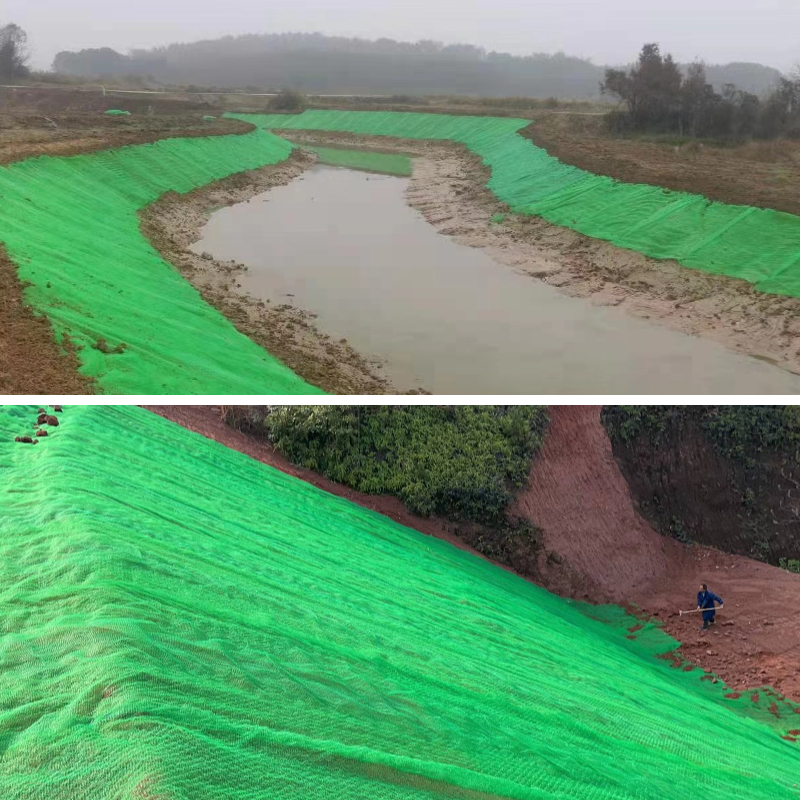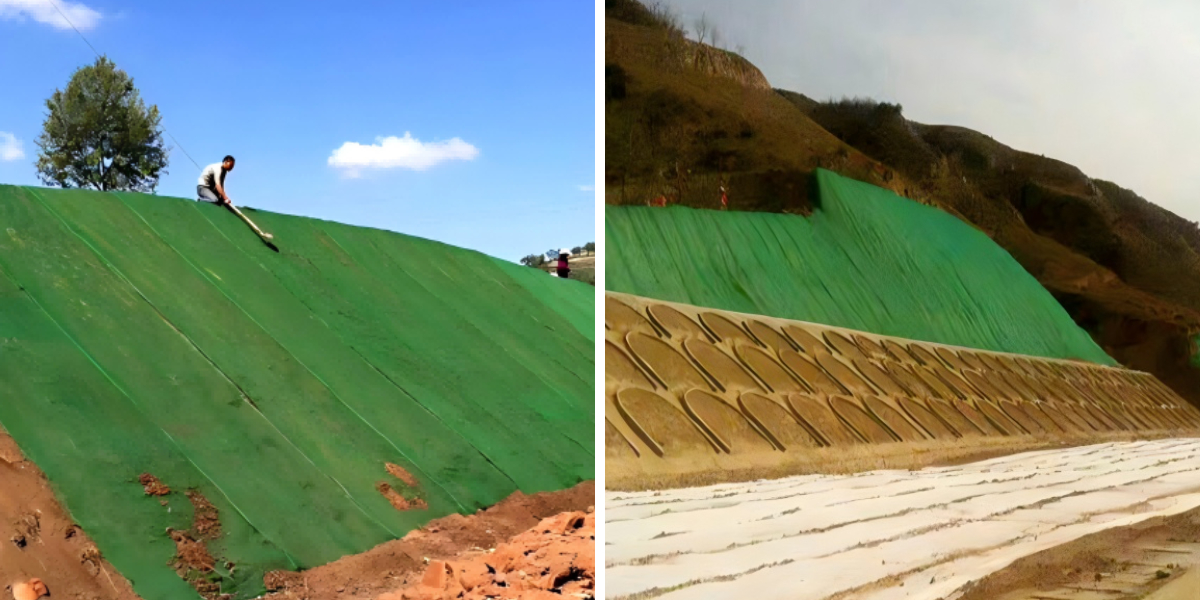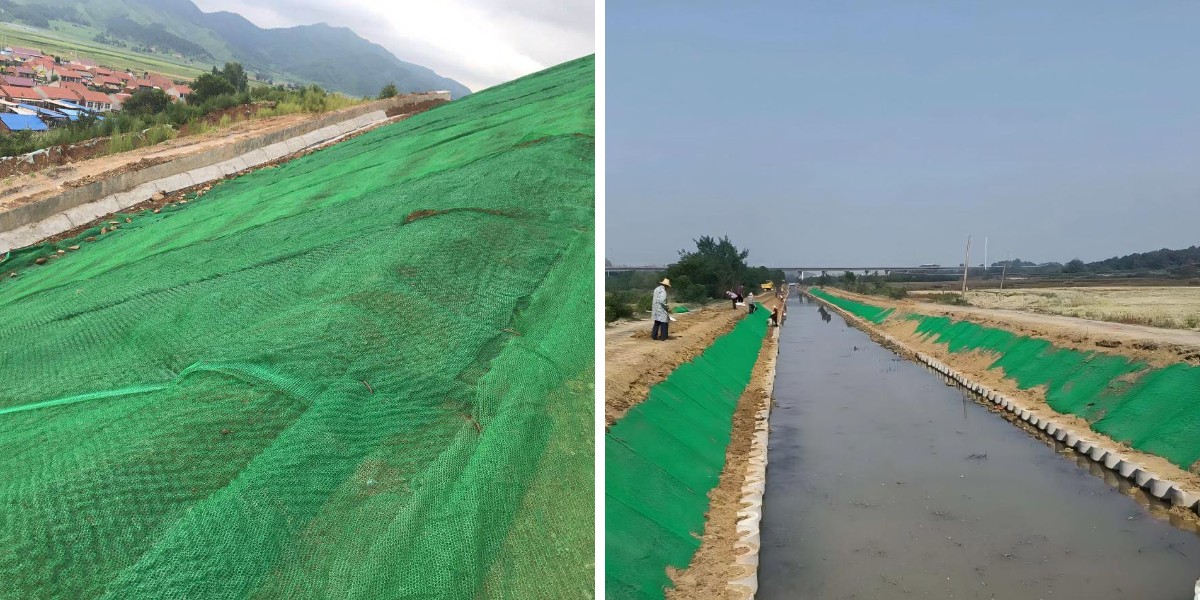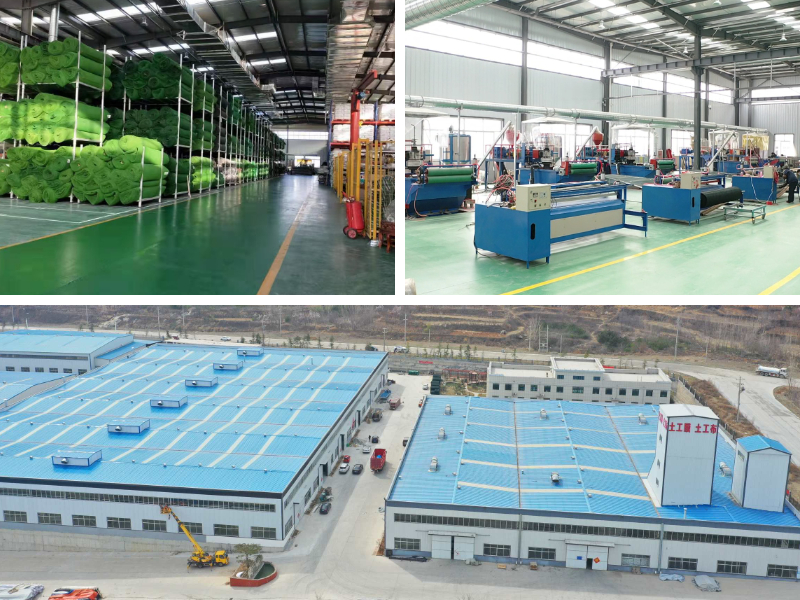Geomat Applications in Railway Infrastructure Projects
The world railway enterprise is present process a technological transformation, with geomat functions rising as a cornerstone for bettering infrastructure resilience, operational efficiency, and environmental sustainability. From erosion manage to real-time monitoring, superior geomats like revetment mesh, 3D geonet, and slope revegetation structures are redefining railway engineering. This article explores how these improvements are addressing quintessential challenges in railway design, construction, and renovation whilst optimizing lifecycle costs.
1. Erosion Control and Slope Stabilization: The Role of Revetment Mesh
Railway tracks traversing mountainous areas or flood-prone areas face regular threats from soil erosion and slope instability. Traditional options like concrete boundaries regularly disrupt ecosystems and lack adaptability. Enter revetment mesh—a flexible, high-strength geosynthetic cloth engineered to give a boost to soil constructions whilst permitting herbal vegetation growth.
1.1 How Revetment Mesh Works
Constructed from polymer-coated metal wires or artificial fibers, revetment mesh varieties a three-d framework that interlocks with soil particles. When hooked up on slopes, it:
Distributes stress evenly throughout the slope surface, lowering localized failure risks.
Enhances shear electricity through stopping soil displacement throughout heavy rainfall or seismic events.
Promotes vegetation increase via its permeable design, enabling roots to anchor deeply and stabilize the slope naturally.
A case find out about from China’s Qinghai-Tibet Railway highlights its effectiveness. In sections susceptible to permafrost melting, engineers deployed revetment mesh mixed with thermal-insulating materials. This strategy decreased slope erosion by way of 70% whilst keeping ecological balance, proving imperative for a railway crossing the world’s easiest plateau.
1.2 Integration with BIM Technology
Modern railway tasks leverage Building Information Modeling (BIM) to simulate revetment mesh performance. For instance, the Guangzhou Metro’s tunnel monitoring machine makes use of BIM to visualize mesh deformation in actual time, triggering indicators when stress thresholds are exceeded. This integration ensures proactive maintenance, minimizing provider disruptions.
2. Real-Time Monitoring and Deformation Analysis: The Power of 3D Geonet
Railway infrastructure needs non-stop monitoring to discover delicate deformations triggered by means of floor settlement, temperature fluctuations, or teach loads. Traditional surveying techniques are time-consuming and inclined to human error. 3D geonet, a geospatial analytics framework, gives a innovative answer by using combining unsupervised gaining knowledge of with 3D scene geometry.
2.1 How 3D Geonet Enhances Monitoring
Developed through researchers like these at SenseTime, 3D geonet methods video feeds from onboard cameras or drones to:
Estimate depth and action in actual time, developing a dynamic digital twin of the railway corridor.
Detect anomalies such as song misalignment or ballast displacement with millimeter-level precision.
Predict future deformations the use of computing device getting to know fashions skilled on historic data.
In the UK’s Network Rail projects, 3D geonet structures analyzed over 10,000 km of tracks annually, figuring out doable disasters 6–12 months in advance. This predictive functionality decreased protection expenses by means of 30% whilst enhancing security compliance.
2.2 Synergy with Sensor Networks
When paired with wi-fi sensor networks (WSNs), 3D geonet will become even greater potent. For example, Fugro’s RILA® gadget mounts sensors on passenger trains to seize music geometry information at line speed. The 3D geonet platform then fuses this information with satellite tv for pc imagery and climate forecasts, producing actionable insights for engineers.
3. Ecological Restoration and Carbon Sequestration: Slope Revegetation Strategies
Railway building frequently disrupts nearby ecosystems, main to soil degradation and biodiversity loss. Slope revegetation—the procedure of restoring vegetation on disturbed slopes—addresses these troubles whilst providing extra benefits:
Carbon sequestration: Native flowers take in CO₂, supporting railways meet net-zero targets.
Erosion mitigation: Root structures stabilize soil, lowering sediment runoff into waterways.
Aesthetic enhancement: Green slopes enhance passenger experiences and neighborhood relations.
3.1 Innovative Revegetation Techniques
Modern slope revegetation goes past scattering seeds. Key developments include:
Hydroseeding: A slurry of seeds, mulch, and fertilizers is sprayed onto slopes, accelerating germination in harsh conditions.
Bioengineering: Live stakes or fascines (bundles of branches) are embedded into slopes, presenting on the spot erosion manage whilst sprouting into vegetation.
Mycorrhizal technology: Fungi symbiotically decorate plant nutrient uptake, enabling survival in nutrient-poor soils like copper mine tailings.
A first-rate instance is China’s Lanzhou-Chongqing Railway, the place slope revegetation restored 95% of pre-construction vegetation cowl inside three years. The assignment used drought-resistant species and drip irrigation systems, attaining a 40% discount in water utilization in contrast to normal methods.
3.2 Measuring Success with Geospatial Tools
To quantify revegetation outcomes, railways rent equipment like:
NDVI (Normalized Difference Vegetation Index): Satellite imagery tracks chlorophyll levels, indicating plant health.
LiDAR scanning: High-resolution 3D fashions measure vegetation density and slope steadiness over time.
These metrics assist optimize renovation schedules and impenetrable funding for ecological tasks through demonstrating tangible environmental benefits.
4. Case Studies: Geomat Applications in Action
4.1 High-Speed Rail in China: Combating Permafrost Threats
The Harbin-Dalian High-Speed Railway crosses permafrost zones the place melting ice threatens tune stability. Engineers deployed a multi-layered approach:
Revetment mesh bolstered embankment slopes.
Thermal pipes regulated floor temperature.
Slope revegetation with alpine grasses averted floor erosion.
This holistic approach decreased permafrost-related protection by means of 65%, making sure dependable operation in -40°C winters.
4.2 UK’s Dawlish Sea Wall: Resilience Against Climate Change
After storm surges destroyed a ancient sea wall in 2014, Network Rail rebuilt it using:
3D geonet to display wave affects and wall deformation.
Revetment mesh with rock armor to dissipate wave energy.
Salt-tolerant revegetation to stabilize dunes and take in stormwater.
The new wall withstood a 1-in-100-year flood in 2023, validating its climate-resilient design.
5. Future Trends: AI and Automation
The subsequent decade will see geomats evolve with AI and robotics:
Autonomous drones geared up with 3D geonet will investigate tracks at night, minimizing provider disruptions.
Self-healing geomaterials will restore micro-cracks in revetment mesh the usage of embedded microcapsules.
Digital twins will simulate slope revegetation outcomes, optimizing seed mixes for precise climates.
Conclusion
Geomats like revetment mesh, 3D geonet, and slope revegetation structures are no longer niche solutions—they’re crucial for constructing railways that are safe, sustainable, and resilient. By embracing these innovations, the enterprise can decrease lifecycle costs, reduce environmental impact, and future-proof infrastructure in opposition to local weather change. As initiatives like China’s high-speed rail and the UK’s Dawlish Sea Wall demonstrate, the future of railway engineering lies in harmonizing present day science with ecological stewardship.
Contact Us
Company Name: Shandong Chuangwei New Materials Co., LTD
Contact Person :Jaden Sylvan
Contact Number :+86 19305485668
WhatsApp:+86 19305485668
Enterprise Email: cggeosynthetics@gmail.com
Enterprise Address: Entrepreneurship Park, Dayue District, Tai 'an City,
Shandong Province









